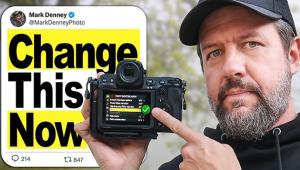Identity Donations

Cameras—including so-called smart phones—that have built-in GPS receivers are cool. You can plot your pictures on a world map in case you’ve forgotten where you went on vacation or spent yesterday evening. Unfortunately, that same GPS data tells a would-be wrongdoer precisely where you live when you casually snap selfies and post them on your homepage. Oops! You didn’t know that it’s like saying, “Here’s what I look like, and here’s where I live.”
Prevention is simple: either turn off the GPS or scrub the metadata before you post. Most metadata is hidden from view, so use an image browser or a program like Opanda EXIF Viewer to check what you’re revealing. You can download it (free) at http://www.opanda.com/
Scared yet? There’s more.
Ever sell, loan or give away a memory card? In the process you probably passed along the last several pictures you shot, even if you formatted the card first. Formatting a memory card does nothing more than mark all of the storage space as “available” for the next images. Formatting does not “erase” the data—it just indicates that it’s okay to overwrite it.
Nosy people use a Data Recovery Program like Lexar’s Image Rescue to resurrect the image files. This same program (and others like it) has an application that will obliterate all data on your card so that it’s no longer there for anyone else to see.
If you don’t want to buy a Data Recovery Program (you really should, but that’s a whole different story) you can sanitize your memory cards by shooting images of the sky or ground until the card is full; then format. Hint: shooting video will fill the card faster. Do this and the malefactor may still be able to recover your images, but they’ll be boring.
—Jon Sienkiewicz











































